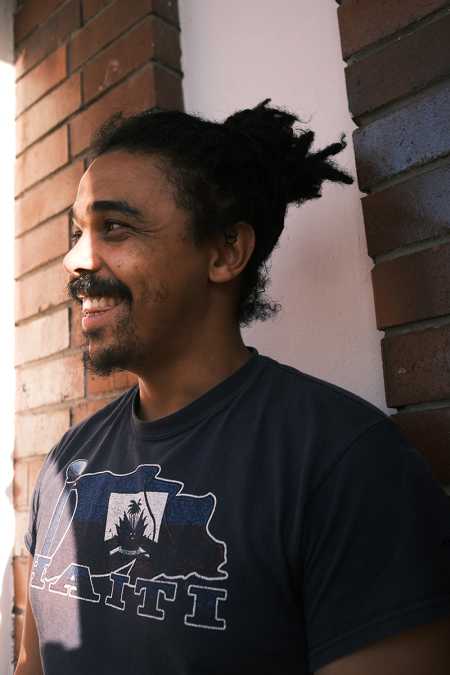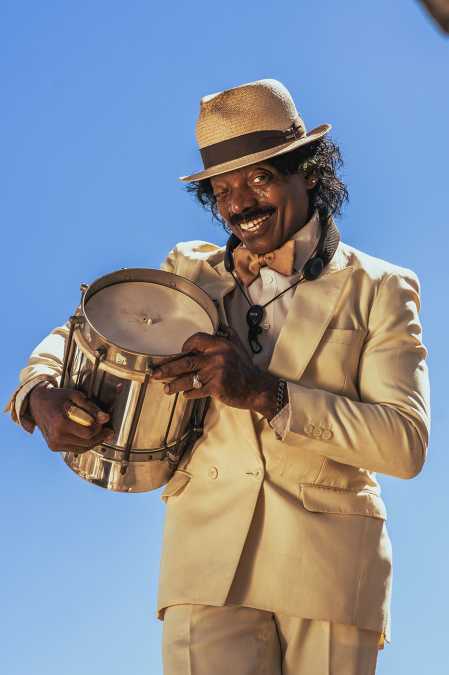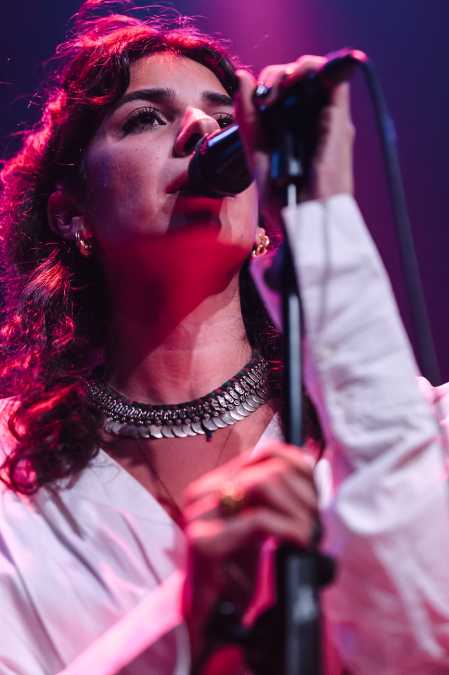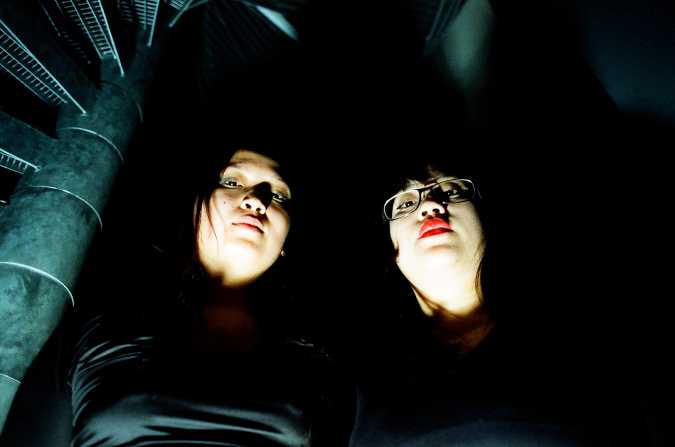Ever since they started working together in the mid-eighties, Czech artists Irena & Vojtěch Havlovi have traveled far and wide, crossing continents, cultures and mediums with styles of European classical music ranging from the Renaissance to contemporary.
In the process, the duo made fans which include Sufjan Stevens, The National's Bryce Dessner (whose composition 'Little Blue Something' with Kronos Quartet was influenced by the duo's work), and filmmaker Vincent Moon (whose documentary Little Blue Nothing was screened on our hybrid platform COSMOS earlier this year).
This November, Irena & Vojtěch Havlovi will perform their hypnotic music live at Le Guess Who? 2022. Below, we are publishing an introduction to the duo by Czech music reviewer, music publicist and scriptwriter Pavel Klusák. The text was included in the liner notes of 2021's compilation album 'Melodies In The Sand', put together by ambient musician Johny Nash and described by Pitchfork as "an immaculate, enchanting portal into the couple’s furtive soundworld."
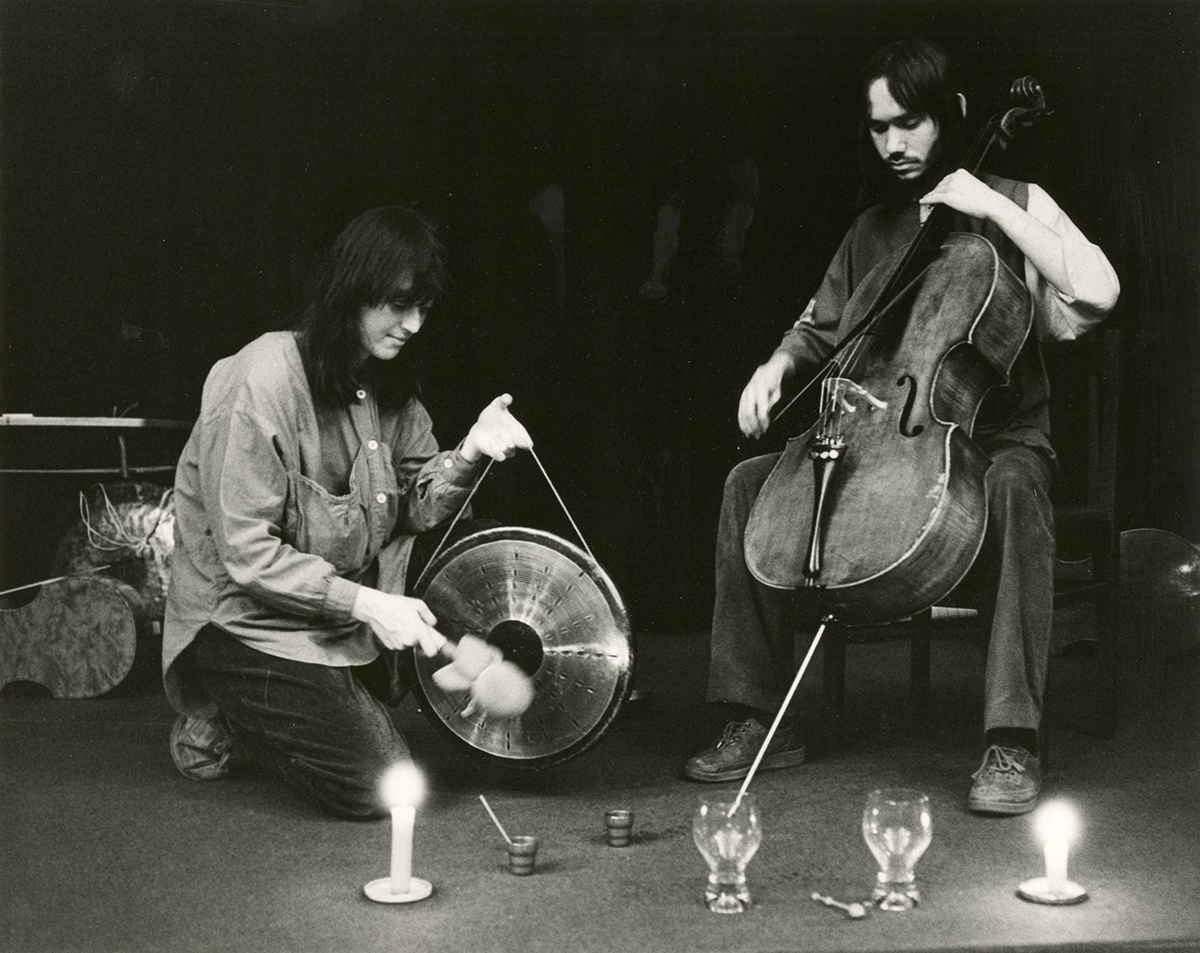
For me, the story of Vojtěch and Irena Havel grows out of the atmosphere of the turn of the eighties and nineties in Prague. In the 1980s, the streets and public life were soaked in grey and exhausted gloom. Late totalitarianism prevailed, no one believed in the regime anymore. People found themselves lost in all the media lies. At the same time, however, a lively life in the underground developed: from postpunk through protest songs to contemporary classical music, overlapping with theatre and happenings. People from this multi-genre scene met frequently and stuck together, irrespective of their working methods. At that time, an ensemble that formally belonged to classical music began to perform in Prague, quickly acquiring young independent musicians. The ensemble, called Capella Antiqua e Moderna, was rooted in humility and tradition: they performed old Renaissance music. But the sound, tuning and performances in the echoes of the old churches inspired the musicians to develop their own music: the new grew from the old. Vojtěch and Irena belonged to the core of the group: from here grew their alliance, their playing together as a duo.
When the Berlin Wall was demolished, fresh freedom and manic activity flooded Czechoslovakia. Isolation from the rest of the world was over. In these years when people learned to do business and enjoyed greater consumption, the music of Irena and Vojtěch pulsed as inconspicuously, quietly and patiently as before. It spanned this period of historical change with its own plan: focusing on what does not alter with a change in state regime, namely the dimensions and depth of inner freedom. I was one of those who, in addition to the loud transformation of our country, also needed a quieter and focused continuum. Judging by audiences at their concerts (often in tearooms) and the critical success of their albums Little Blue Nothing, Háta H., Mysterious Gamelanie or Music of Silence, I was not the only one.
In the Havel's music you can easily hear a repetitive pulse, a music of recurring motifs inspired by minimalism. It is significant that Vojtěch and Irena combine the free inspiration of the minimalists (as well as traditional music of Asia and Africa) with a deeply Central European instrument: the baroque viola da gamba.
Like the ghosts of the past architecturally evident in Prague at every turn, the history of this instrument echoes through the music of the Havel’s. Through their music its spirit now communicates with people in the present day, occupying a different role than it did 400 years ago.
When Vojtěch and Irena started to travel to India repeatedly, yet another unique element entered their style. Since the beginning of the 1990s, the gestures of their work stand with wide and surprising range, from fragile post-Satie piano to loud ritualistic percussions and gongs. Their work has an unspecified, open spirituality that appeals at the level of care, compassion and focused paths to essence. A strong personal charge balances the universal here. It is indeed impossible to ignore the closeness and unpretentious intimacy of both partners on stage: I think that part of the audience returns to Vojtěch and Irena year after year because it is music of secrets and music of safety.

The couple, whose life and music are like Möbius' tape, have had many important collaborators in 35 years. They have participated in the birth of Czech video art (Radek Pilař), accompanied existential contemporary dance (Eva Černá and Karel Vaněk). A documentary about the couple was made by the celebrated independent filmmaker Vincent Moon. Bryce Dessner's composition Little Blue Something is a tribute to the music of the Prague duo and uses its motifs: it was recorded by the Kronos Quartet on the album Aheym. Musicians from The National, as well as Sufjan Stevens, are among the long-time fans of Irena and Vojtěch Havel. Their music is open and still receiving new stimuli. But even so, its germ could hardly have grown elsewhere than in "Praga magica", a city where the past permeates the present and the demons of today struggle with those who have lived here for centuries.
Irena & Vojtěch Havlovi perform live at Le Guess Who? 2022 on Saturday, 12 November. Also performing at the festival are a.o. Abdullah Ibrahim, Low, Animal Collective, Tumi Mogorosi, Muriel Grossmann Quartet, Jeff Parker, The Staples Jr. Singers, and many more.
Text by Pavel Klusák
Photography by Kateřina Wiecková
